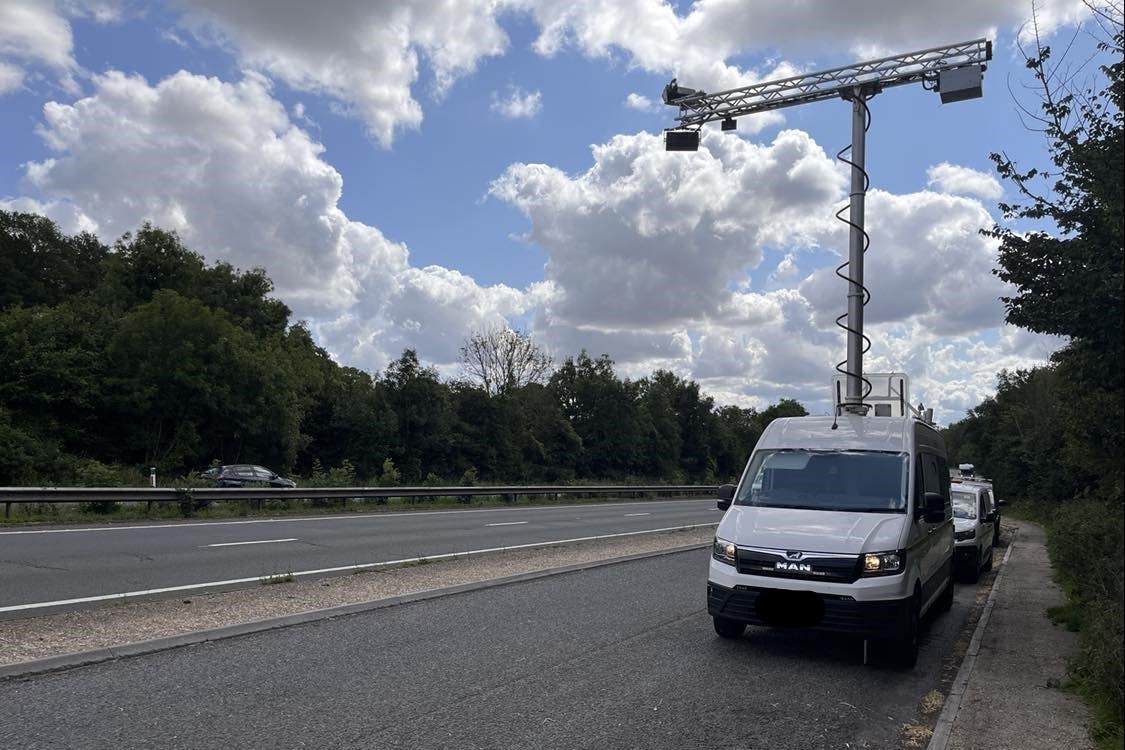Police use AI camera van to spot drivers using mobile phones
Almost 500 offences were identified in a week of action by the Hampshire and Thames Valley forces.

A police spy camera van which uses artificial intelligence (AI) to detect drivers using their mobile phones at the wheel and not wearing seat belts has led to nearly 500 driving offences being identified.
Hampshire and Thames Valley Police forces targeted commercial vehicles in a week-long operation on the A34 and the A303 using the Sensor test vehicle with the Acusensus “Heads-up” solution provided by infrastructure consultancy AECOM.
The AI-equipped camera van can detect drivers using their phones using two cameras.
The first is set at a shallow angle to identify a mobile phone close to the driver’s ear as well as spot whether a seat belt is being worn, and the second has a steep view to see if a mobile phone is being held down in front for texting.
Once the offences are identified by the AI system, the results are double-checked by at least two humans before being considered for prosecution.
Simon Gomer, manager of the police forces’ Safer Roads Unit, said: “These are very exciting times and this has been a great opportunity for both forces to utilise the latest in AI technology.
“But the results we’ve had from just one week sadly show how prolific these offences are. We will continue to spread the message that distracted driving kills, these offences will be punished and social habits need to change.”
Dr Jamie Uff, of AECOM, said: “Despite the often-reported dangers of distracted driving and failing to wear seat belts, the numbers of people killed or seriously injured as a result of these behaviours remain high.
“The technology AECOM is deploying makes detection straightforward and is providing valuable insight to the police and policy makers on the current level of road user behaviour. We are really keen for the use of this technology to be expanded to raise awareness and improve road safety for everyone.”
The Heads-up van identified 86 drivers suspected of using a phone and 273 motorists or passengers suspected of not wearing a seat belt, with a further 132 mechanical offences identified.
Five arrests were also made for offences such as drug-driving and disqualified driving.
Police Sergeant Paul Diamond, of the Commercial Vehicle Unit, said: “It is always disappointing to see the level of danger some people bring to themselves and other motorists, but with dedicated operations like this we can combat the threat and remove the worst offenders.”
Bookmark popover
Removed from bookmarks